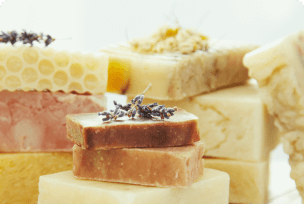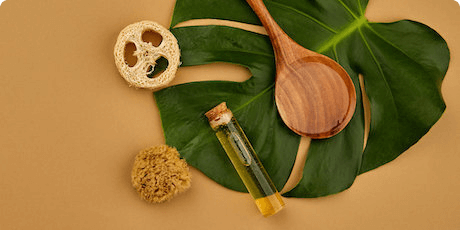
1. Sustainability - Going Beyond Natural Products
Brand transparency is being placed on top when it comes to consumer buying behaviour in 2018. More meaningful consideration is being given to ingredients, ethical sourcing and packaging. This is primarily due to the popularity of natural and organic products and the drive for ethical and sustainable importance, especially among younger consumers. Although Millennials are strongly behind this sustainability movement, environmental issues & vegan trends also have a strong impact. The growth of socially conscious and even gastronomia show a soaring demand for vegan-friendly products. Brands like Dewsbury and Elemis with vegan-friendly superfood skincare range say that they are capitalising on the movement, according to the SPC Magazine.
Over the last year, New Product Development (NPD) reported a 38% increase in sales of premium vegan beauty products. In the UK alone, the market was valued at £124m in 2017 accounting for 26% in prestige facial skincare. Globally, the fastest growing claims were animal-friendliness (e.g. no animal ingredients and vegan) and skin-friendliness, according to Mintel.
Further to this, with increasing awareness of environmental issues, there are many examples so far in 2018 of companies campaigning against animal testing (example of the Body shop), challenging RSPO sustainability practices of palm oil production (POIG members), taking initiatives towards plastic-free packaging or using recycled plastic from the oceans (P&G & Nivea Examples).
Additionally, some brands also started innovating using zero waste products and long-term use products. Lush recently ran a promotion campaign for solid shampoo and packaging-free cosmetics with a solid shampoo bar. Concentrated formulations are more “niche”, but also gaining popularity with emphasis on eco-friendly benefits and portability. See example below on Concentrated NPD: Yves Rocher I Love My Planet
 Image Credit: Christina Key
Image Credit: Christina Key
To conclude, sustainability and environmental-friendliness will become a common practice in the future for brands. Thus, following sustainable practices, rethinking brand positioning and considering packaging innovations - will play a key role in consumers’ product choice in years to come (Mintel 2018 Packaging Trend, Sea Change).
Brand’s Positioning, Personality & Purpose
With sustainability in mind, brands have started reviewing their Corporate Social Responsibility (CSR) practices both sustainability and ethical, as selling a great beauty product is no longer enough. Consumers are looking for brands and products that support and reflect their values. In fact, Mintel research shows that in the US, 59% of US iGens and Millennials have stopped buying products from a brand/retailer if they believe they are unethical and in the UK, 37% of consumers are conscious if products are tested on animals.
Also being genuine is a key, as customers can spot when cause-related marketing is trend-driven rather than honestly motivated. “Brands that have a clear stance on ethical and sustainable practices can also boost sales” says Helen Duzebury, Sr Account Manager at NPD UK Beauty the SPC Magazine.
2. Anti-pollution and Anti-bluelight Claims
With an increasing dependence on technology, pollution and other environmental stressors, consumers are demanding solutions for healthy skin appearance and thus encouraging innovations in skincare and personal care products.
Anti-pollution claims have started appearing more since last year, however, there is still space for more rapid growth as consumers demanding for products that protect the skin from environmental aggressors. Blue light is also a concern for consumers as they believe that being exposed so much to blue light from digital devices accelerates skin ageing and affects sleeping and overall wellbeing.
Brands are taking notice of this and the market is likely to rise in the next few years, according to Euromonitor International. With environmental concerns raising, NPD in Beauty & Sales of anti-pollution skin care products rose by 30% in the second half of 2017 and are expected to grow in 2018 (SPC, June 2018).
Similarly, anti-blue light claims are also rising as consumers perceive their skin to be more sensitive to environmental aggressors; there has been a rise in dermocosmetics – the integration of derma science and natural ingredients. To add, botanical ingredients with antioxidant, anti-flammatory and shielding properties are expected to benefit from this in particular according to Euromonitor (the SPC Magazine). For example, Detox Intense anti-pollution line addresses skin concerns brought about by environmental and technological pollution using natural ingredients and drone technology.
 Image Credit: Annemarie Kruse
Image Credit: Annemarie Kruse
The increasing demand for healthy body and skincare using naturals combined with effective environmental claims are here to stay and will benefit the brands that are innovating and looking to keep up with the demand.
3. Natural and Organic Innovations
Natural and Organic Products have been one of the top trends in 2017 and it is continuing to grow. New product developments in personal care industry are focusing on natural ingredients, especially in skincare, and products with “free from” chemical claims are more apparent. This trend has also something to do with people embracing more healthy and active lifestyles and thus continuing to inspire consumer purchasing decisions. Premium beauty and personal care categories are the fastest growing in the market since 2012and effective premium, natural and healthcare brands are leading the way in the growth of the market in 2018.
According to Mintel, in Europe, 52% of shower, bath and soap products launched are plant-based and feature the botanical/herbal claim due to the interest in beauty products with natural ingredients. In the US, increased awareness of consumers led to 30% of them looking for brands/retailers that ban harmful ingredients from their personal care products and 49% of 18-34 years old using skincare, purchase products using natural ingredients.
Consumer interest, media attention and the emergence of apps and tools designed to inform and educate consumers about ingredients used in personal care products has also made a great impact in consumer buying behaviours (Mintel Research). Naturals are becoming increasingly popular with consumers as they are perceived as purer and safer. Even large, multinational manufacturers are getting on board launching new natural and eco brands. See Unilever’s ApotheCARE Essentials line using natural ingredients below:
 Image Credit: Brandchannel.com
Image Credit: Brandchannel.com
4. Customised Beauty on Demand
We have already touched on consumers that are seeking beauty products derived from nature and are matching vegan, ethical and wellness trends. However, there are two other very interesting and emerging trends focusing on inclusivity and expressing individuality.
Mintel research shows that 31% of Chinese consumers say that the word ‘individuality’ defines luxury and 40% of US make-up users aged 25-34 are frustrated by products that don’t match their skin tone. Customers demand individual products to match their skin type, colour and express their personality. In addition to this, the customisation is a global trend even in K-Beauty skincare trends are tipping on that with Koreans choosing products based on their skin type and needs, before personalising them by blending, combining and applying products in multiple ways (SPC Magazine, June 2018). The message is clear and brands should stop targeting consumers by their age, skin colour or body type and remember that everyone is unique.
Another great example of inclusivity is Wet n’ Wild’s “Breaking Beauty” campaign showing a great example of beauty for everybody. The campaign promotes faces of a transgender model, a cancer survivor, activist and the first model with albinism. Consumers are looking for brands to recognise, respect, and represent their physical characteristics and their identities which extend beyond their appearance.
 Image Credit: MademeNoire
Image Credit: MademeNoire
Additionally, customers seek products that match their ethnicity and brands have opportunities to match these customer demands, as only 12 % of UK Millennials aged 16-35 say their ethnicity is accurately portrayed in advertising (Mintel). A great example to follow is Rihanna’s Fenty Beauty offers ‘shades for all’ to match a wide range of traditionally hard-to-match skin tones, creating formulas that work for all skin types, and pinpointing universal shades.
To sum up, inclusivity is an emerging theme and brands that are promoting that will benefit from reacting to the diversity of their consumers by welcoming and caring for people of all shapes, ages, colours, genders and lifestyles. In the future, personal care products will have to offer more personalisation than ever and brands will have to give consumers the products to match their beauty needs.
5. Genderless beauty
Inclusivity trends are also tapping in genderless trend as consumers are moving away from traditional gender stereotypes due to increased visibility of gender diversity. According to Mintel, brands are becoming increasingly aware of the gender blurring barriers and promoting unisex beauty. Few brands that are embracing genderless beauty are CoverGirl and Maybelline, who led the way by using male ambassadors, followed by Rimmel London, which recruited a 17-year-old beauty blogger Lewys Bal.
Other brands started actively market themselves as unisex, such as the self-explanatory, non-gender-specific, K-beauty inspired brand Panacea. Other brands embraced the packaging to appeal to genderless trend. These are Context, ASARAI, and Aesop to name a few.
 Image Credit: Aesop
Image Credit: Aesop
Image Credit: Asarai
Image Credit: Context
To sum up, with inclusivity inspired consumers, unisex brands can tap into the trends by offering more appealing product lines and genderless promotions on marketing campaigns or packaging. This is a new emerging trend and we will see more brands stepping up in this area in the future.
6. Digitally-driven Trends
Digital technology follows us everywhere, influencing our daily lives each step of the way. Now, with a spur of voice activation, v-commerce, virtual reality and social media consumers are increasingly demanding quick and interactive shopping experiences and more personalisation. Brands are taking notice and are working on optimising for the platforms.
Voice activation is also coming into play with Amazon Echo & Google Home and consumers are adopting of voice tech - 47% of global smartphone users use voice recognition at least once a month (Mintel). Personal Care brands like L’Oréal and Sephora are working on voice activation and Google home to enrich their shopping platforms. Voice-activation will impact search engines and will become an easier form of curation for consumers faced with loads of products.
 Image Credit: Piotr Cichosz
Image Credit: Piotr Cichosz
Social media is also playing a major role in this digital age. For example, Mintel shows that in Italy 40% of consumers who view beauty content on social media would be interested in buying products directly through social media and Instagram is working with 20 retailers, including Sephora and Ulta to test its shoppable platform extension.
Virtual reality and augmented reality are also being applied by brands in personal care and we have mentioned about this in our trends blog for 2025.
These trends are important to note as consumers are also aware of the price of their personal data, thus more demanding for shopping vouchers and discounts, along with access to the limited edition, personalised launches and experiences.
To Sum This Up
So there you have it, 6 Trends in Beauty and Personal Care Industry.
Stephenson strives for sustainability and stands against animal testing. Customers in 55 countries chose our products as they are naturally derived, organically and sustainably certified, not tested on animals and vegan-friendly. If your brand is looking innovate for future consumers, we offer sustainable bases and ingredients to formulate and make future-proof products for global consumers, get in touch with us today and our team will gladly share their expertise and help you innovate with the upcoming trends.

























